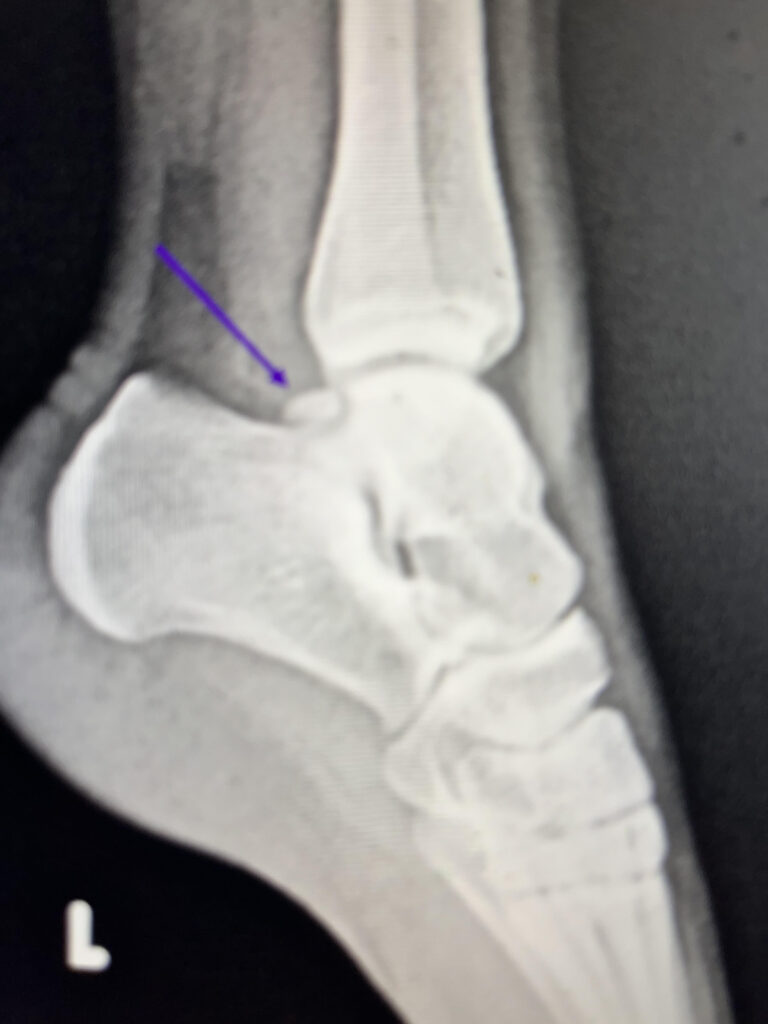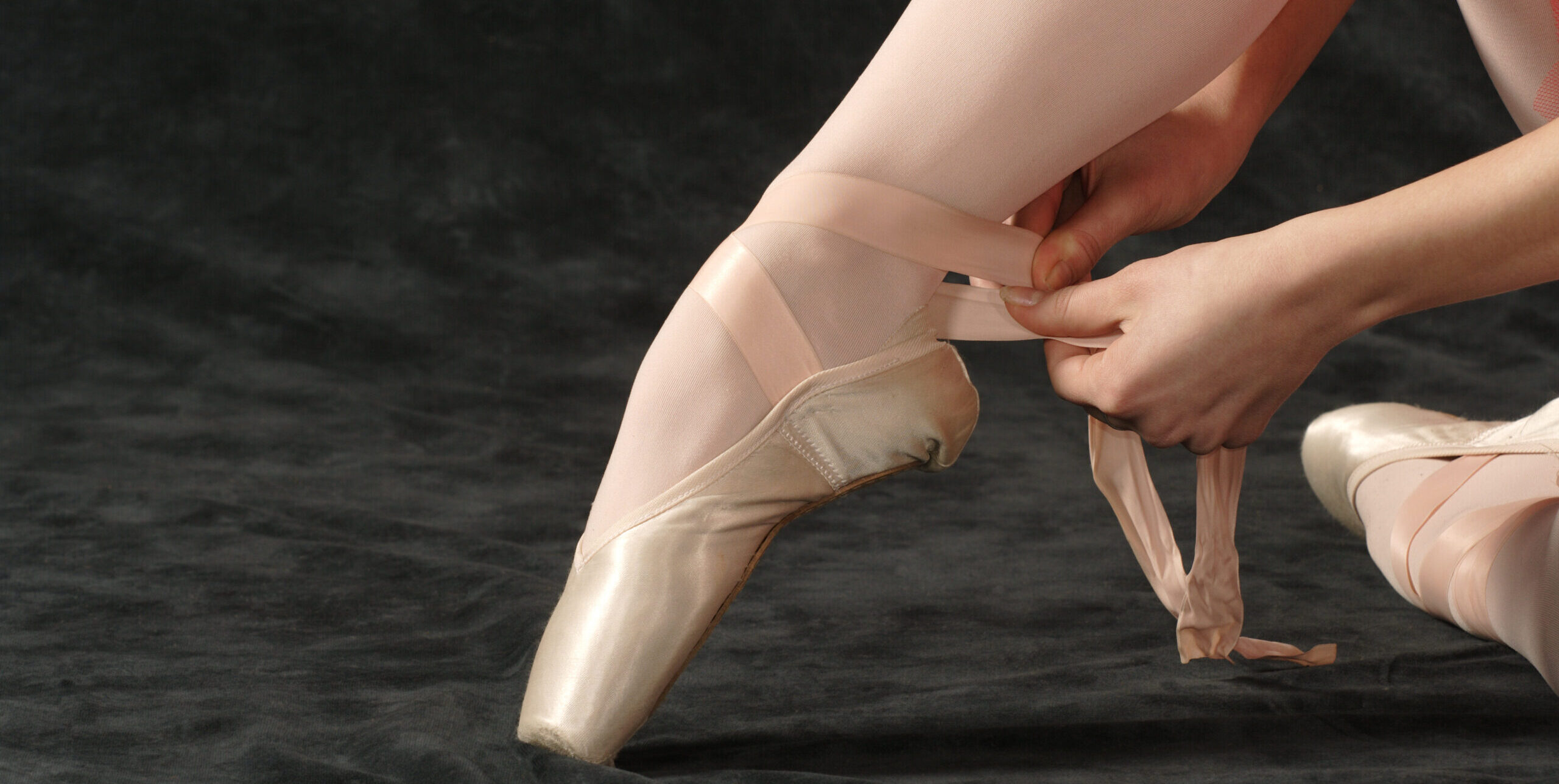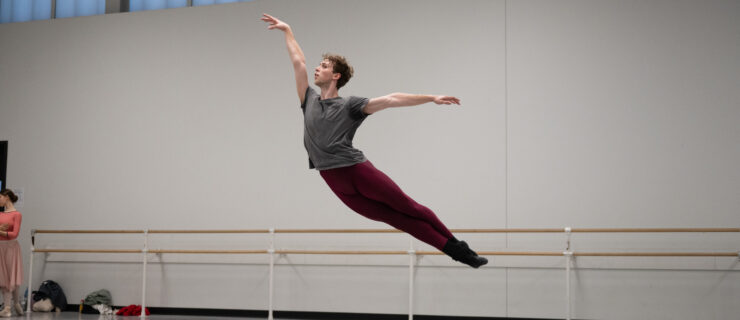Dancers, Here’s What to Know About Os Trigonum Syndrome
About eight years after he joined Pacific Northwest Ballet, Kiyon Ross suddenly felt a sharp pain in the back of his ankle. “One day in class, we were doing a relevé combination, and I felt something kind of catch,” says the former soloist, now PNB’s associate artistic director. From that moment on, he had trouble pointing his foot and couldn’t go onto demi-pointe. When he went to the staff doctor and got X-rays, he learned he had an os trigonum.
An os trigonum is a small extra bone attached to the back of the ankle (near the heel bone) by fibrous cartilage. It can be round, oval, or triangular. It’s something certain people are just born with, says physical therapist Alyson Filipa, PT, DPT, who treats dancers at Cincinnati Children’s Hospital. “As you grow, it develops into more of a hardened, bone-like material,” she says. Os trigonum can occur in either one or both feet.
If that extra bone starts causing pain, the condition is called os trigonum syndrome. Read on to learn why it’s so tricky for ballet dancers in particular, and what you can do about it.
Why Is Os Trigonum Syndrome So Common Among Ballet Dancers?

According to orthopedic surgeon Donald Rose, MD, who specializes in dance injuries, about 12 to 23 percent of all people have this extra bone in their foot, and many live their whole lives without being bothered by it. Dancers, however, can struggle with os trigonum because they spend so much time on relevé.
Filipa says that some dancers can go for years without problems. Then, an increase in training, a change in choreography, or more time in pointe shoes (or a switch to a different pair) can suddenly cause pain. That’s because any of those changes might have you spending more time in a fully pointed position, where the os trigonum may irritate the connective tissue at the back of the heel. Additionally, pointe shoes that don’t offer enough support can put extra pressure on the area.
How Can You Tell if You Have It?
If an os trigonum is causing you pain, you’ll feel it when you go on pointe or relevé, or even do a tendu. The pain will disappear when you’re back on flat or you flex your foot, Filipa says. “Most people think that they have something going on with their Achilles,” she adds. “But it’s deeper than that.”
If you see a doctor and they’re aware of possible posterior ankle impingement, they’ll likely use their hand to passively point your foot to test if it replicates the pain you’re experiencing. “The Achilles is actually relaxed by doing that, and the os trigonum is compressed, and therefore causes pain,” Rose explains. While an X-ray may show an os trigonum, Rose typically orders an MRI to clearly see the extent of it, as well as to rule out a soft-tissue impingement, such as a ganglion cyst.
What Your Options Are if You Have an Os Trigonum
Here’s the good news: Just because you have that extra bone doesn’t necessarily mean it needs to be removed. “Surprisingly, a lot of people do really well with conservative management,” Filipa says. A physical therapist might have you rest the area more when you’re not dancing (i.e., wear a boot off-hours)—or completely immobilize it for about three weeks of not dancing at all. “Normally, a period of immobilization is very effective in getting the tissue around that extra bone calmed down,” Filipa says. Rose says he’s also seen restrictive taping and anti-inflammatory medications help.
“Don’t feel like you have to jump to surgery right away,” Filipa says, adding that conservative measures might be enough to ease the irritation, especially if it’s a new problem that’s cropped up after years of no pain.
However, those steps aren’t always sufficient. Ross, for instance, says he tried anti-inflammatories, had two cortisone shots, and took a few months off from dance, but the pain kept returning. In cases like his, doctors will usually suggest surgical removal to find relief.
Surgeons can take a few different approaches, but Rose says the procedure typically lasts just half an hour. Afterwards, he says, patients usually walk in a boot or with crutches for up to two weeks, then start physical therapy. (Ross warns that for him, the pain during that first week after surgery was “excruciating,” though of course not all recoveries or surgeries are the same.)

Filipa says she often works with patients for about four months postsurgery to help them get back to dancing on pointe fully (the timeline can be shorter if they don’t dance on pointe). “We’re working on getting their full range of motion back, getting rid of any kind of post-op swelling that’s in the area, and working a lot on balance and proprioception—and then getting their strength back,” she says. She points out that it’s especially helpful to work with a dance medicine specialist who’s familiar with ballet, so they can recommend exactly how to modify barre work and center during recovery.
Getting Back to Dance
After os trigonum surgery, sometimes dancers are surprised to find they suddenly have more range of motion than they’re accustomed to. “They have to get used to a new balance point,” Filipa says, explaining that some basic skills, like pirouettes, may require some relearning due to potential shifts in balance points on demi- or full pointe.
Ross says that was the hardest part for him. “They’ve taken something out, and the mechanics shift,” he explains. He had to relearn basic technique with what felt like a totally new body part. In his case, it took nearly two years to fully heal and feel totally confident in his body again.
Yet most dancers eventually do get there. Rose says that approximately 95 percent of patients who have the surgery are expected to return to their presurgical level of dance in about six to seven weeks, though the journey back may sometimes take longer. “I danced the rest of my career without pain in that part of my body,” Ross says. “I just had to learn how to use the ankle and foot that I have now, and trust my body again.”






